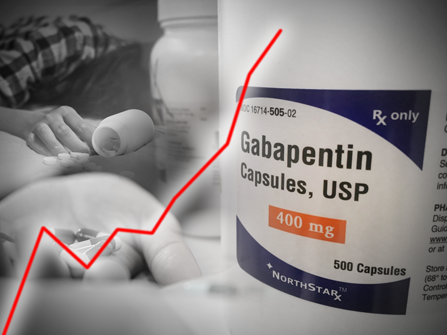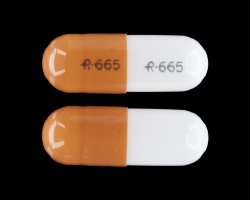Exploring the Off-Label Gabapentin Spike

If you’ve ever had a family member or friend who struggled with seizures, then you’ve probably heard of gabapentin. If not, let’s define it. Gabapentin is an anti-epileptic drug, an anticonvulsant. It’s one of the most commonly prescribed medications in the U.S.
But one of the reasons why it is prescribed so much has absolutely nothing to do with seizures. In many cases, the drug is prescribed to treat physical pain in non-seizure patients. Yet the pill was never intended for that purpose. In a time when overzealous prescribing of drugs has gotten us into immense trouble (witness the opioid pain reliever epidemic), hearing that yet another medication is being prescribed a little too liberally is certainly a cause for concern.
A Story from the New York Times
A May 2019 story in the New York Times opened with the following title: “Millions Take Gabapentin for Pain. But There’s Scant Evidence It Works.” The subheading reads, “There is very little data to justify how these drugs are being used and why they should be in the top 10 in sales.”
As stated, gabapentin is one of the most widely prescribed drugs in the United States. One of the main reasons why it is being prescribed at such high rates is for its supposed pain-relieving characteristics. Many doctors are prescribing the drug “off-label.” That means that the drug is being prescribed in ways not stated on its label, i.e., for conditions that the drug was not given FDA approval for—such as pain in this case.
Remember, gabapentin is a drug intended to treat seizures. It was never meant to be a pain reliever. There is little evidence that the drug is useful in treating pain. And we still don’t know what kind of harmful side effects might occur in people who take the medication for pain.
The issue of off-label prescribing is concerning. Quoting Jane E. Brody, the author of the New York Times article:
“Off-label means that a medical provider can legally prescribe any drug that has been approved by the Food and Drug Administration for any condition, not just the ones for which it was approved.”“The drug [gabapentin] was initially approved 25 years ago to treat seizure disorders, but it is now commonly prescribed off-label to treat all kinds of pain. The F.D.A. approves a drug for specific uses and doses if the company demonstrates it is safe and effective for its intended uses, and its benefits outweigh any potential risks. Off-label means that a medical provider can legally prescribe any drug that has been approved by the Food and Drug Administration for any condition, not just the ones for which it was approved.”
See where that gets dangerous? Suddenly the patient must be the one who determines whether a medication prescribed off-label is safe and effective or not. It’s concerning that just because the FDA approves a drug to be used for the treatment of one malady, a doctor can then prescribe the medication for the treatment of an entirely different malady.
Is There a Risk Here?

At this time, there is no peer-reviewed evidence that gabapentin is addictive. Is there a risk for misuse of the drug? Certainly. Could it potentially be addictive? Possibly. But we just don’t know for sure if the drug is addictive or not. More research needs to be done to determine if the drug itself carries addictive properties.
However, that does not mean that the drug is harmless. The New York Times article goes on to talk about how two doctors, Dr. Christopher W. Goodman and Dr. Allan S. Brett of the University of South Carolina School of Medicine, reviewed a series of published evidence of the possible benefits and potential risks of off-label uses of gabapentin.
According to Dr. Goodman: “There is very little data to justify how these drugs are being used and why they should be in the top 10 in sales. Patients and physicians should understand that the drugs have limited evidence to support their use for many conditions, and there can be some harmful side effects, like somnolence, dizziness, and difficulty walking. Furthermore, for patients prone to substance use disorders, like an opioid addiction, the gabapentinoids, although they are not opioids, are potentially addictive.”
There’s definitely some risk here. And it is not just one New York Times contributor and a couple of doctors who are talking about it. A research paper published in the U.S. National Library of Medicine warns about the off-label use of gabapentin for pain relief. Another research paper, this one published in the Journal of the American Medical Administration, talks about how concerning it is that gabapentin is so often prescribed for pain even when it is not approved by the FDA to treat pain.
The Need for Safer Alternatives in Pain Relief
The medical community needs to learn the lesson that the opioid epidemic taught us which is that doctors and patients alike need to be far more suspicious of pharmaceutical drugs. More research needs to be done on each medicine, and pharma drugs should only be used for their exact, intended purpose.
“If there’s anything we’ve learned from the opioid epidemic, it’s that we need to rethink how we prescribe drugs we once assumed were safe.”
Dr. Paul Earley is another doctor who spoke out against the off-label use of gabapentin in a PEW Charitable Trusts report on the drug. He said, “For years, we considered gabapentin to be ’good for what ails you.’ But I’m much more cautious than I used to be. If there’s anything we’ve learned from the opioid epidemic, it’s that we need to rethink how we prescribe drugs we once assumed were safe.”
And it’s not like there aren’t safer methods for treating pain. A Harvard paper talks about the pain-relieving benefits of chiropractic care. That makes sense, as much of what pains Americans can be traced back to misalignments within the spine.
Another paper, this one put together by the Arthritis Foundation, talks about a variety of non-opioid, non-pharmaceutical remedies for physical pain. It discusses herbs, supplements, spices, vitamins, creams, certain foods, and many other methods for tackling physical pain without turning towards potentially addictive pharmaceuticals.
Ultimately, we need to make a nationwide shift away from pharmaceutical drugs that pose even the slightest risk for addiction or a habit-forming condition. We know that alternatives in pain relief exist. We all have to make our voices heard in demanding better options in pain relief. It’s unfair and frankly unbelievable that people should be put at risk for addiction just for attempting to treat their pain.
If you know someone who is struggling with acute or chronic pain and who is trying to treat it, encourage them to explore alternative remedies. And if you know someone who has already fallen prey to a drug habit, see to it that they receive expert help through a residential, long-term drug rehab.
Sources:
- https://www.nytimes.com/2019/05/20/well/live/millions-take-gabapentin-for-pain-but-theres-scant-evidence-it-works.html
- https://www.ncbi.nlm.nih.gov/pmc/articles/PMC3404313/
- https://jamanetwork.com/journals/jamainternalmedicine/article-abstract/2728959
- https://www.pewtrusts.org/en/research-and-analysis/blogs/stateline/2018/05/10/abuse-of-opioid-alternative-gabapentin-is-on-the-rise
- https://www.health.harvard.edu/pain/chiropractic-care-for-pain-
- reliefhttps://www.arthritis.org/living-with-arthritis/treatments/natural/supplements-herbs/9-supplements-arthritis.php


 ®
®